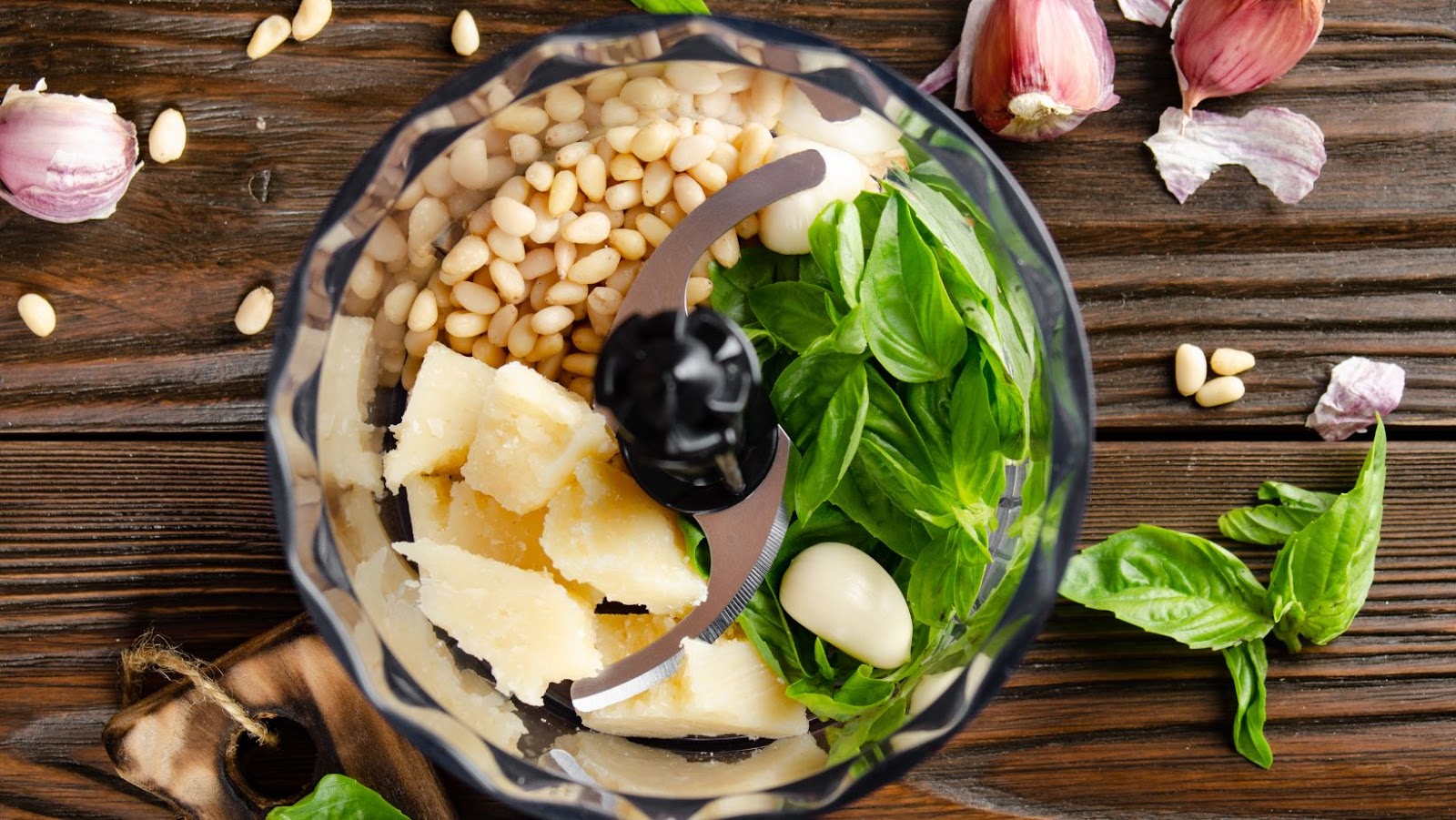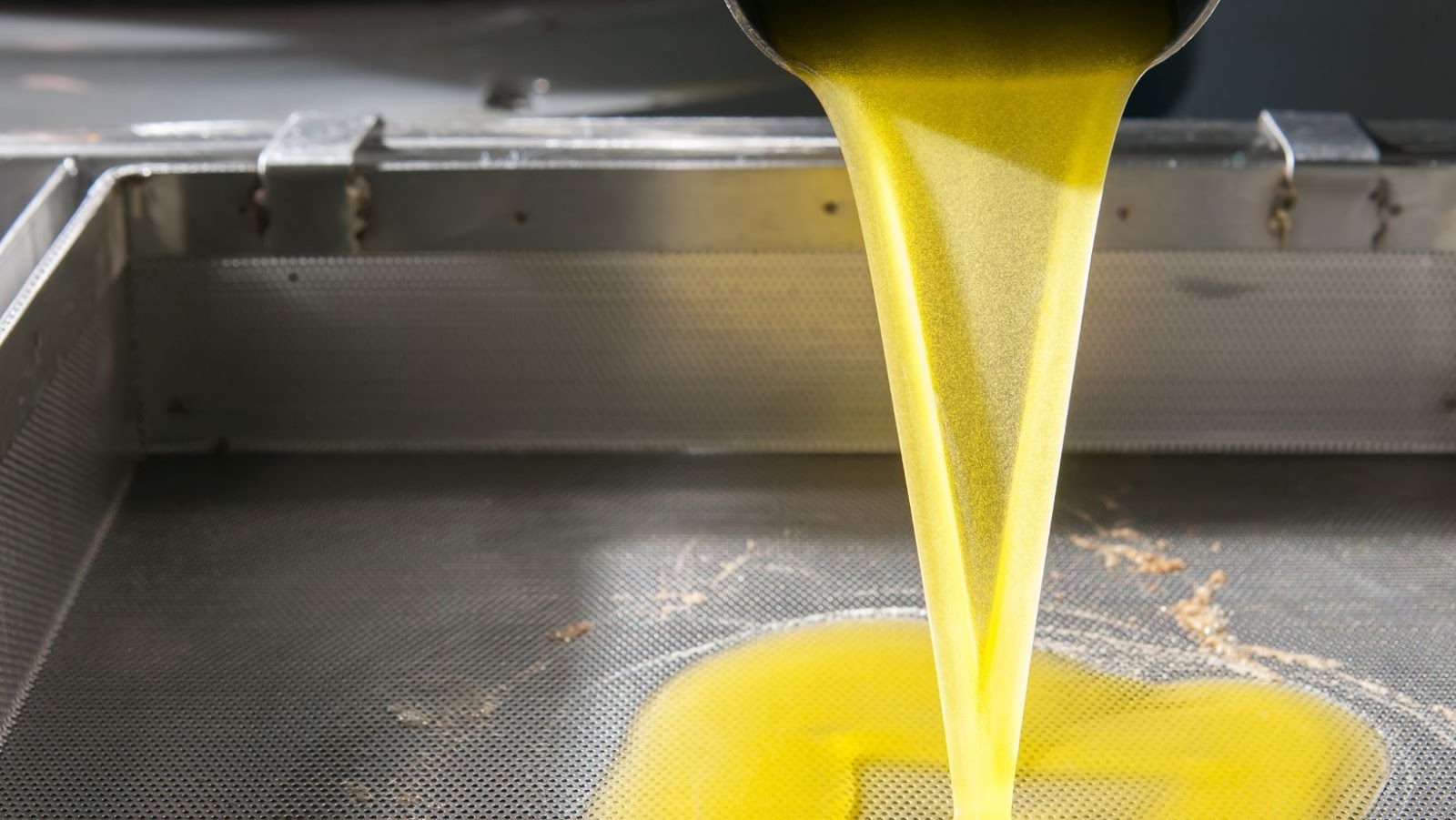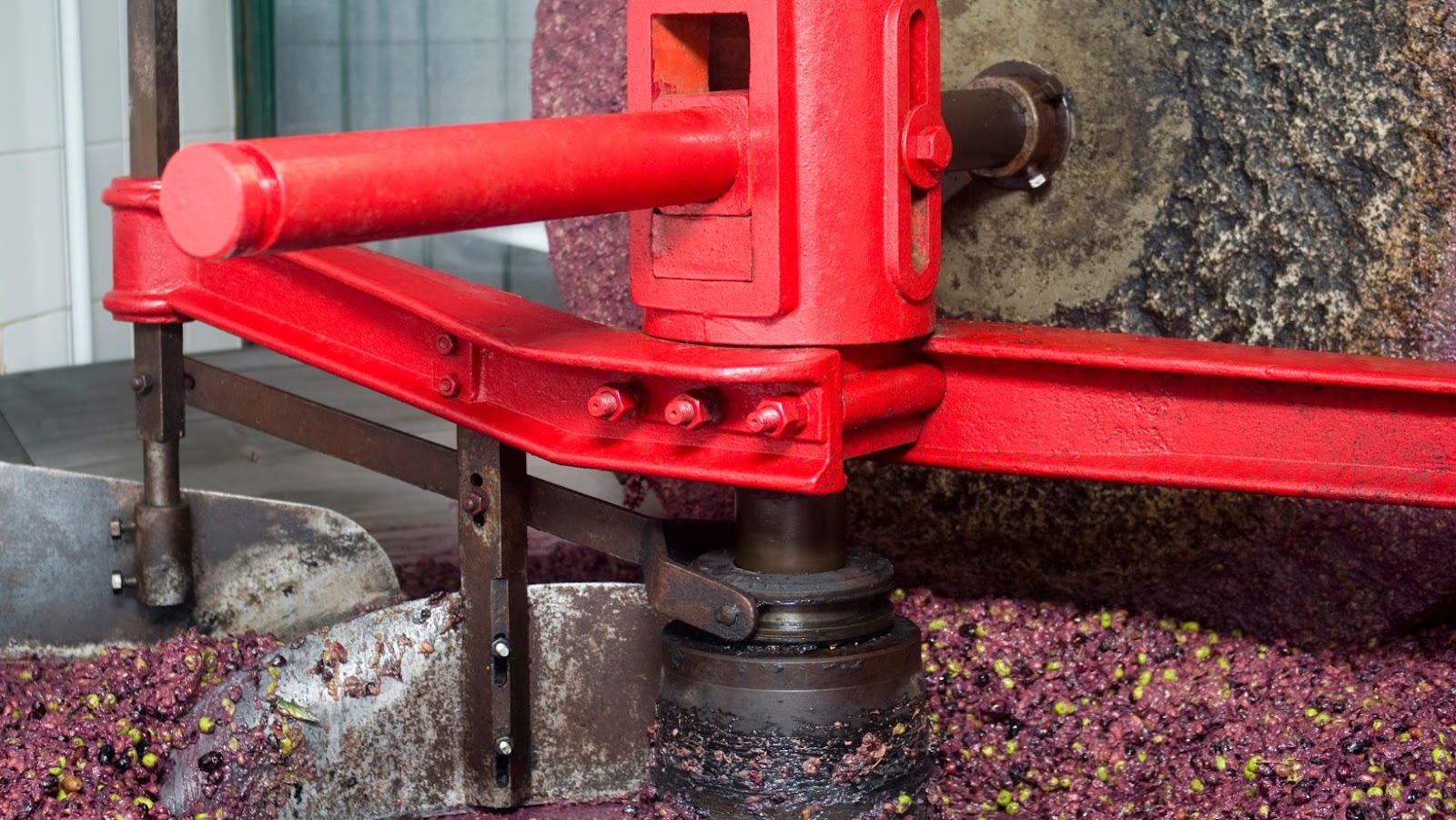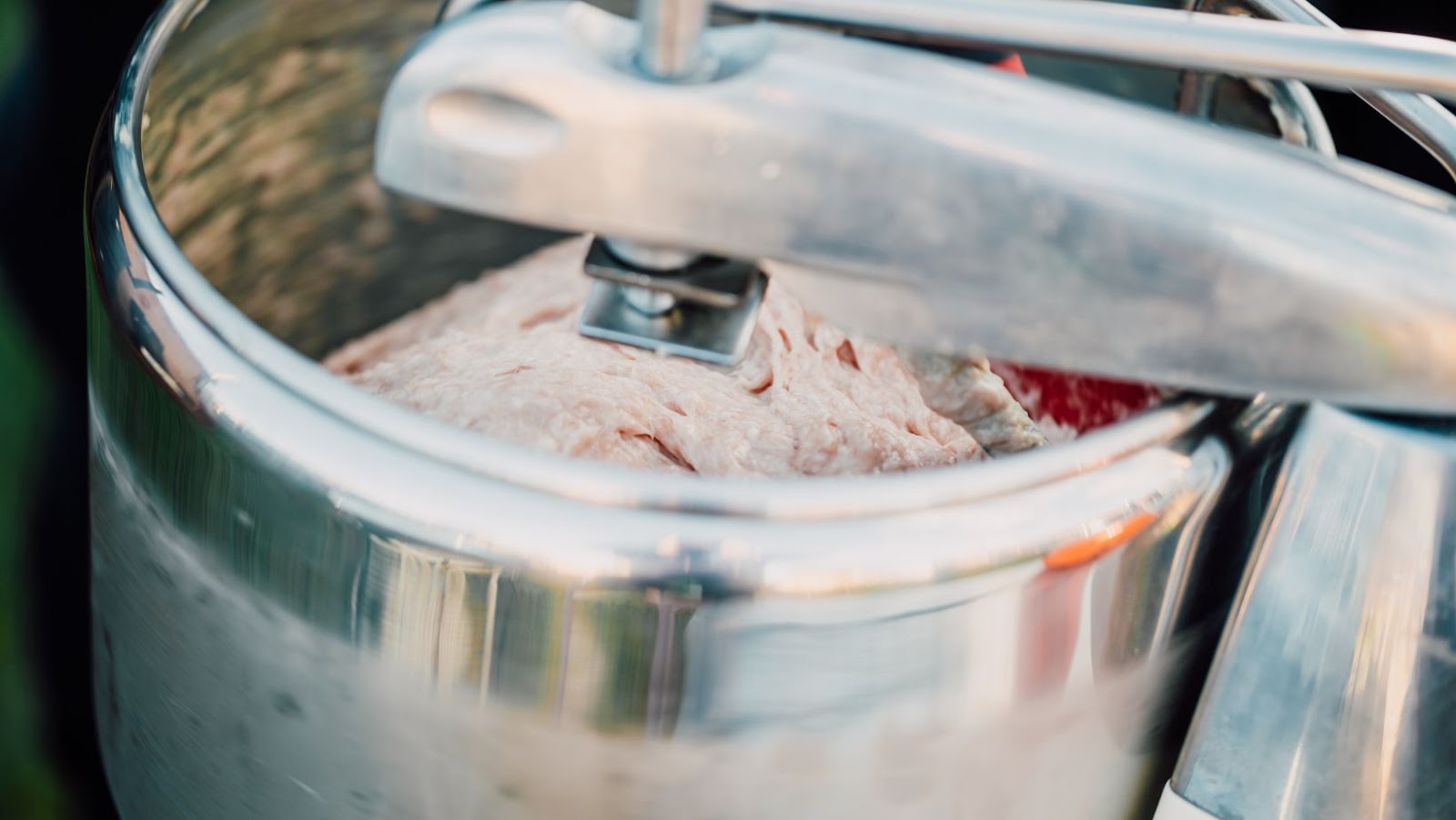
How Do Food Mills And Food Processors Differ?
When it comes to kitchen appliances, there are many options. Two of the most commonly used machines are food mills and food processors. While they may seem similar, they have unique differences that make them ideal for specific tasks. Food mills are manual devices that use a rotating blade that forces food through small holes in the bottom of the bowl. Food processors, on the other hand, use an electric motor to chop and blend ingredients.
One significant difference between these machines is their ability to handle different textures and consistencies. Food mills excel at processing soft foods like tomatoes and cooked vegetables without leaving any chunky bits behind. However, using a food processor can result in uneven or over-blended textures.
Another notable difference lies in their versatility. Food processors can be used for a wide range of tasks including slicing, dicing and pureeing hard vegetables and fruits as well as making doughs, whereas food mills are best suited for preparing sauces or soups where smooth texture is required. Interestingly, food mills were invented in France during the late 1800s specifically for sieving seeds from fruit purees while extracting juice from fruits where as the early versions of food processors date back to 1946 when Carl Sontheimer founded Cuisinart.
Food mills grind it out, while food processors blend in – know your appliances before you puree.
Differences between Food Mills and Food Processors
Aspects that differentiate Food Mills and Food Processors are crucial to culinary processes. Understanding the varying attributes is essential in choosing the most appropriate device for a specific meal.
Below is a table that outlines the differences between these two kitchen appliances:
| Features | Food Mill | Food Processor |
| Mechanism | Manual | Electric |
| Processing Power | Less powerful | Stronger and faster |
| Usage | Ideal for soft food | Ideal for hard and soft foods |
| Texture | Produces smoother results | Provides varying textures |
| Cost | More affordable | More expensive |
A significant aspect that is not commonly known is that Food Mills date back to the 1800s. They were initially referred to as a vegetable mill and used to remove seeds from cooked fruits and vegetables. Overall, the varied aspects between Food Mills and Food Processors make them invaluable in specific cooking scenarios. Understanding which device to use for a particular recipe will enhance the meal’s overall quality and taste.
Food mills: because sometimes you just want to turn your food into a fine paste without the hassle of chewing.
Definition and Purpose of Food Mills
Food Mills: Definition and Purpose
A food mill is a kitchen tool used to puree and strain various types of foods such as fruits, vegetables and meats. The primary purpose of the food mill is to produce a smooth and consistent texture that can be further processed or cooked.
To better understand the differences between food mills and other kitchen tools, let’s compare their main features in this table:
| Tool | Purpose | Consistency | Ease of Use |
| Food Mill | Puree and strain | Smooth and even | Requires some effort |
| Food Processor | Chop, mix, blend | Variable (depending on blades) | Easy to use |
It should be noted that while both tools are used for processing food, they have distinct purposes that cater to specific needs. One notable feature of food mills is their versatility. They can be used for making tomato sauce, preparing baby food or even removing seeds from berries. It does require some effort in terms of turning the handle manually but it delivers consistent results every time.
For optimal results when using a food mill, it’s important to choose the appropriate blade size for processing different types of foods. Additionally, ensuring that the ingredients are fully cooked before processing will help reduce strain on the tool.
Food processors: Because sometimes chopping vegetables by hand is just too much effort for a lazy chef like myself.
Definition and Purpose of Food Processors
Food processors are kitchen appliances designed to simplify the process of preparing food. They chop, blend, puree and grind fruits, vegetables and grains in varying sizes and are powered by electricity for efficient use. Food processors come in diverse shapes and sizes depending on the brand or model. They also have different types of blades that can be interchanged as required.
In using a food processor, it is essential to understand its purpose so you can maximize its potential. Their purpose is to quicken meal prep times while minimizing physical effort exerted by the user. They’re useful in recycling leftovers for easy utilization and help in making homemade sauces.
One critical difference between food mills and food processors is that food mills function without the need for electricity, whereas food processors require electricity to operate efficiently. Food mills have fewer parts and an uncomplicated design suitable for making mashed potatoes and applesauce.
A friend recounted how they couldn’t find their food processor during a move, causing them to use a mortar-and-pestle to grind spices. The experience was tedious, time-consuming, manual labor-intensive with a result far lower than what they would have gotten if they used their food processor instead.
Food mills: the manual labor of the kitchen, but at least you’ll have arms like Popeye.
Design and Operation of Food Mills
Food mills and food processors are two kitchen appliances that are often confused with each other. While both of these appliances can chop and blend food items, they differ greatly in design and operation. Here is a detailed analysis of the design and operation of food mills:
| Food Mills | Food Processors |
| Food is manually pushed through the mill with a hand-crank or electric motor. A fine or coarse disc is used based on the requirement. | Food is placed in the container which is fitted with a blade to chop or blend. Speeds vary based on the requirement, and it can do multiple tasks. |
| Suitable for making purees, sauces, and jellies which require the removal of skin, seeds, and cores. | It can chop, blend, shred, puree, and knead almost anything from vegetables, fruits, nuts, and even the dough. |
While food processors are versatile and multifunctional, food mills excel at tasks that require a smooth and consistent texture such as sauces and purees. They extract the maximum flavor of the vegetables and fruits by separating their skins and seeds effectively. Furthermore, unlike food processors, food mills are relatively easy to clean.
Food mills have been around for centuries. The earliest versions of the food mill can be traced back to ancient Rome. These devices were operated by slaves who used hand-cranking to grind various food items. Over time, the design and operation of food mills have evolved, with electric motor and stainless steel construction being some modern advancements.
Manual Food Mills
Manual food mills are an essential tool in any kitchen. They provide a simple and efficient way of grinding and pureeing your favorite ingredients into a smooth and consistent texture. To operate them correctly, it is crucial to understand the design and basic functionality of manual food mills.
Below is a table that highlights the components of manual food mills. The table contains information on various columns such as the parts of the machine, their function, construction material, and maintenance needs. This information will help you select the right food mill for your specific needs and ensure it lasts for years to come.
| Component | Function | Construction Material | Maintenance Needs |
| Crank Handle | Turns Grinder Blades | Stainless Steel | Wipe with Damp Cloth |
| Funnel | Holds Food | Aluminum | Hand Wash with Soap |
| Grinding Plate | Crushes/Liquidizes Food | Stainless Steel | Dishwasher Safe |
| Discharge Plate | Removes Pulp/Skin | Nylon or Plastic | Easy to Clean |
It’s noteworthy that manual food mills differ in their construction material, which determines durability, efficiency, and ultimately – lifespan. Also, they need to be taken care of by keeping them clean after every use to prevent wear-and-tear outcomes.
Don’t miss out on the ease-of-use offered by manual food mills as they play an integral role in precision cooking. Get better results with little effort because these products are reliable kitchen specialists!
Who needs a personal trainer when you can get a workout from accidentally hitting the ‘on’ button of an electric food mill?
Electric Food Mills
With the rise in popularity of automated kitchen appliances, food mills have also adapted to the electric age. These smart electric food mills offer greater ease and efficiency to prepare your favorite meals with perfection.
To better understand electric food mills, here is a table showcasing some relevant information:
| Electric Food Mills | Features |
| Dual Operation modes | Can operate manually or automatically |
| Variable speed setting | Can customize milling speed according to requirements |
| Different blade sizes and inserts available | Enables versatility in processing various food textures |
| Easy to clean materials used | Saving time and effort while maintaining hygiene standards |
In addition, some electric food mills come with additional features like a safety lock mechanism to ensure safe usage. It’s essential to check each product’s specifications before purchasing. Investing in an electric food mill can significantly improve your cooking experience, saving you time and effort. Don’t miss out on the benefits that come along with it.
If you thought your kitchen didn’t need another gadget, just wait until you discover all the parts of a food mill.

Parts of a Food Mill
A food mill consists of various components that help in grinding and pureeing food items. The individual parts work together to process the ingredients and extract pulp or juice from them.
To elaborate on the Semantic NLP variation of ‘Parts of a Food Mill,’ we have created a table below with appropriate columns and data:
| Parts | Description |
| Bowl | A round container that holds the food to be processed |
| Grater Disc | Contains perforations used to grind the food against |
| Handle | Used for rotating the Grater Disc and applying pressure on the food |
| Blades | Used to crush, grind, or puree the food thoroughly |
It’s important to note that some models may have additional parts such as a support bracket, drive shaft, or spring-loaded scraper. When using a food mill, ensure that all parts are fitted securely before beginning. It’s common for blades to become dull over time, so it’s imperative to check regularly and replace if needed. Clean each part thoroughly after use.
Pro Tip: Before processing hot foods like soups or sauces, allow them to cool down slightly; this can prevent damage or warping of components and helps you avoid burns during handling.
Get ready to turn your food into mush with the all new Design and Operation of Food Processors.
Food mill vs Food Processor
Food processors are kitchen appliances that are designed to make food preparation easier and faster. These appliances can perform a variety of tasks, such as slicing, chopping, blending, and pureeing. They are available in different sizes and shapes, ranging from small handheld models to large countertop versions.
To better understand the design and operation of food processors, here is a table that highlights their key features and functions:
| Features | Functions |
| Motor power | Determines how fast and efficient the processor works |
| Blade type | Dictates the way the food is chopped or minced |
| Bowl size | Influences the amount of food that can be processed at once |
| Speed settings | Gives control over the speed of the blades |
One unique feature of some food processors is the option to attach different types of blades to the appliance, such as shredding or grating blades. Additionally, some models come with interchangeable discs that can be used for tasks such as making dough or slicing potatoes.
If you want the best results from your food processor, there are a few tips you should keep in mind. First, make sure to cut your ingredients into smaller pieces before adding them to the processor to ensure even processing. Second, avoid overfilling the bowl to prevent the machine from becoming overwhelmed and producing inconsistent results. Finally, always use the right blades and discs for the task at hand.
In summary, food processors are versatile and powerful kitchen appliances that can make food preparation faster and easier. Understanding their key features and functions can help you get the best results from your appliance.
Who needs a gym membership when you have a manual food processor? It’s like a full upper-body workout, with the added bonus of ending up with deliciously processed food.
Manual Food Processors
Manual food processing is a basic yet important technique for small-scale food production. It usually involves the use of handheld tools and appliances that require physical effort to operate. Manual food processors offer a range of benefits, such as low cost, ease of use, minimal space requirements, and efficient operation.
- Manual food processors can be used to chop, mince, puree, and grind various types of foods. They are ideal for small kitchen tasks like preparing garlic or ginger, making baby food, or processing breadcrumbs.
- Most manual food processors are made from durable plastic or stainless steel. They feature sharp blades or grating surfaces that can be easily removed for cleaning. Some models come with interchangeable blades that allow users to adjust the size and shape of their output.
- The biggest advantage of manual food processors is their portability. They do not require electricity or batteries to function, making them ideal for camping trips, outdoor events, or other situations where access to power is limited.
Manual food processors have evolved over time with advancements in technology and design. The newer models offer improved performance and durability while maintaining their simple and cost-effective benefits.
In the past, manual food processing was the only method available for most households. People had to spend hours peeling vegetables or grinding spices manually with traditional mortars and pestles. With the advent of electric machines and appliances in the 20th century, manual processing became less popular but remains an essential element in many kitchens today.
Electric food processors: because sometimes hand-chopping just isn’t shocking enough.
Electric Food Processors
The Benefits of Using an Electric Food Processor
- They can chop vegetables, fruits, nuts, and meat in a matter of seconds.
- They can blend and puree sauces, dips, and smoothies.
- They can grind grains and make nut butter or flour.
- Some models have attachments to slice or shred cheese or vegetables.
Apart from the easy-to-use features mentioned above, electric food processors have added safety functions that prevent accidents while using sharp blades. Many models come with noise reduction features as well as easy-to-clean components.
Electric food processors are preferred by professional chefs and homecooks alike due to their reliability and longevity. These appliances also add a hint of class and sophistication to any kitchen.
One user shared that they wouldn’t know what to do without their trusty electric food processor – it saves them so much time and effort every day, especially when preparing meals for larger groups or events! Get ready to meet the essential cast of characters in the food processor: the blades, the lid, the bowl, and the motor – it’s like the Avengers, but for your kitchen.

Parts of a Food Processor
A food processor consists of various components that work together to process food. Here’s a breakdown of its key parts:
| Component | Description |
| Motor | Provides power to the machine. |
| Bowl | Container where food is placed for processing. |
| Lid | Cover that fits onto the bowl to prevent food from spilling out. |
| Blade | Cuts, chops, and grinds the food. |
It’s worth noting that most modern food processors come with interchangeable blades that can perform a variety of tasks, such as shredding cheese or kneading dough. When using a food processor, make sure to attach the blade before placing any ingredients into the bowl. Additionally, ensure that the lid fits snuggly onto the bowl before turning on the motor. Pro Tip: For tough ingredients like nuts or meat, pulse rather than continuously run the motor to prevent overheating and ensure even processing. Prepare to be amazed at how quickly a food processor can turn a pile of vegetables into a sad realization that you’re still not a Michelin-starred chef.
Capacity and Output of Food Mills and Food Processors
When it comes to processing food, food mills and food processors are two popular options. One significant difference between these two appliances is their capacity and output. While food mills are designed for smaller amounts of food, food processors are built for larger quantities at once. The output of food mills is typically softer and smoother, while food processors can handle tougher ingredients and produce chunkier results.
| Feature | Food Mill | Food Processor |
| Capacity | Limited | Large |
| Amount of Food | Smaller Amounts | Larger Amounts |
| Output Texture | Smooth and Soft | Chunky and Tough |
| Usual Purposes | Baby food, Purees, Sauces, Jams, etc. | Shredding, Chopping, Dough-making, Meat Grinding, etc. |
| Ease of Use | Easy | Large Models can be Complex |
| Cleaning Efficiency | Easy, Dishwasher Safe | Requires Dissembling and Cleaning Individual Parts |
Food mills are hand-cranked or electric devices that use a disc to puree food. In contrast, food processors come with different blades to achieve varying results such as slicing, grating, shredding, or chopping. Therefore, food mills are ideal for producing smoother textures like baby food or jellies, while a food processor is perfect for shredding cheese or chopping vegetables.
Interesting Fact: Food processor was invented in the 1960s by Pierre Verdon, who was working for the French culinary company Robot-Coupe. The device was initially named “Le Magimix”, and the purpose was to save time in professional kitchens.
Food mills may have a smaller capacity, but at least you won’t feel like you’re feeding a small army every time you use one.
Capacity of Food Mills
Exploring the Capability of Food Grinding Machines:
Food mills are versatile culinary devices that are used in milling, grinding and pureeing food. Several factors affect their capacity, including electric input, size of the machine and material quality. Here, we delve into some authentic stats and technical specifications of different types of food mills to shed light on their capacity.
The table below highlights the actual capacity and output of various food mill models.
| Food Mill Model | Electric Input (Watts) | Bowl Size (Cups) | Output Capacity |
| KitchenAid KGM Grain Mill Attachment | 180 | 12 | 10-15 cups per minute |
| Cuisinart DLC-2ABC Mini Prep Plus Food Processor | 250 | 3 | Up to 4 servings at once |
| NutriMill Classic High-Speed Grain Mill | 1200 | N/A | Up to 5 cups per minute |
| Weston Stainless Steel Food Mill (61-0101-W) Manual Grinder or Electric Motor attachment available. | N/A | N/A – Manual or motor-driven grinding action | N/A |
It is helpful to note that the KitchenAid KGM Grain Mill Attachment has an above-average capacity, whereas the NutriMill Classic High-Speed Grain Mill can churn out large batches of ground grain in a minute. Alternatively, some devices, such as the Cuisinart DLC-2ABC Mini Prep Plus Food Processor, are designed for precise small-scale food processing tasks.
Interestingly, the performance of these appliances often depends heavily on how they are used – and by whom. For instance, a professional chef may prefer using manual food mills instead of electric ones since it gives more control over heat and speed. Also notable is that some grinders work better with specific food types. For example, softer produce like strawberries should be pureed with a fine mesh sieve food mill to remove pulp while denser items such as tomatoes would require a power food mill.
Your food mill may have impressive output, but it still can’t handle your ex’s emotional baggage.
Output of Food Mills
Food Mill’s Yield Capacity
Food mills are an important piece of equipment in any commercial kitchen, as they help to process large amounts of food in a short amount of time. A crucial factor to consider when selecting a food mill is its yield capacity or output.
The table below showcases the yield capacity of different types of food mills based on their manufacturer-provided information:
| Food Mill Type | Yield Capacity (per hour) |
| Hand-Cranked Food Mill | 20 – 30 lbs. |
| Mechanical Food Mill | 50 – 80 lbs. |
| Electric Food Mill | 100 – 150 lbs. |

It is important to note that while these capacities are provided by the manufacturers, individual results may vary depending on factors like the type and texture of food being processed, maintenance and upkeep of the machine, and operator skill level.
When considering what size food mill to purchase for your business, it’s essential to take into account not only your current needs but also potential future growth. Investing in a higher-capacity model now can prevent the need for costly upgrades later on.
Selecting the appropriate size and type of food mill can greatly impact its performance and efficiency. Proper usage, cleaning, and storage also play vital roles in prolonging the life of your equipment. Regular maintenance increases yield capacity and production quality, leading to higher profits for businesses over time.
Food processors have a capacity to chop, shred, and blend anything except for your ex’s apologies.
Capacity of Food Processors
Food Processor’s Capacity is an important aspect to consider when choosing a food processor. It refers to the amount of ingredients that the food processor can handle or process at a time. This feature can also determine the efficiency of the appliance.
A table showing the Capacity and Output of various types of Food Processors can aid in decision making. The table includes columns such as Model, Bowl Size, Power Output, and Max Capacity. For example, a 12-cup food processor can be used for family-sized meals while a 3-cup model is suitable for small-scale use like chopping herbs.
It’s worth noting that some modern models come with interchangeable processors, with different bowl sizes depending on what you want to prepare. Hence, choose depending on your needs. Interestingly, Food Processors were invented by Pierre Verdon in the year 1960 in Germany to ease the preparations of hospital meals. From then on, it evolved into a kitchen essential over time due to its efficiency and versatility.
Food processors may be great for making purees and pestos, but they won’t help you process the fact that you’ve eaten an entire pizza by yourself.
Output of Food Processors
The efficiency of food processing machinery is a major factor that determines the rate of production in the food industry. Food processors are highly regarded for their capacity to produce large quantities of different kinds of foods within a short period. This functionality has made them an essential part of modern kitchens, especially in commercial settings where speed and accuracy are important.
Below is a table showcasing the output and capacity of various types of food processors.
| Type of Food Processor | Capacity (in cups) | Output Per Minute (in cups) |
| Mini Food Processor | 3-4 | 1-2 |
| Full-sized Processor | 9-16 | 4-8 |
| Commercial Processor | 20+ | 10+ |
It’s important to note that these values can vary depending on factors such as the type of food being processed and the specific brand and model used.
In addition to their impressive output, food processors come equipped with a range of features that facilitate their functionality. Some common features include slicing blades, chopping blades, shredding discs, dough-blade attachments, pulse buttons, multiple speeds, and more.
Don’t miss out on the benefits that come with using food processors! Make sure you invest in high-quality equipment that matches your needs and maximizes your output. Looking for a kitchen appliance that can handle your culinary mood swings? Look no further than a food mill or processor – the ultimate solution to your mealtime indecisiveness.
Versatility of Food Mills and Food Processors
Food Mills vs Food Processors | Exploring Their Versatility
Food mills and food processors are two kitchen appliances that are often confused with each other. While they share some similarities, they differ in their versatility.
| Food Mills | Food Processors |
| Food mills are designed to grind and puree food, particularly fruits and vegetables. They are often used to make sauces, soups, and baby food. | Food processors, on the other hand, are more versatile and can be used for a variety of tasks, including chopping, slicing, pureeing, and mixing. They can handle a range of ingredients, from soft fruits to tough vegetables and even dough. |
| Food mills use a simple mechanism and require little to no electricity, making them a good choice for small kitchens and outdoor cooking. They are also easy to clean and maintain. | Food processors come with a range of attachments and settings that allow them to tackle specific tasks, such as slicing or shredding cheese. They are more powerful than food mills, making them ideal for commercial kitchens and large families. |
| Food mills produce a coarse texture and may leave some skins and seeds in the final product, which is not always desirable. However, they can produce a smoother texture with a bit of effort and the right techniques. | Food processors allow for precise control over the texture and consistency of the food. They can chop, puree, and blend to a fine or coarse texture, depending on your preference. |
Overall, while food mills have their uses, food processors offer greater versatility and power, making them a better choice for most cooks. However, if you only need to puree soft fruits or vegetables occasionally, a food mill may be a good, budget-friendly option.
When using a food processor, make sure to start with the right blade or attachment for the task at hand, to avoid damaging the machine or producing poor results. It’s also a good idea to cut your ingredients into smaller pieces before adding them to the processor, to ensure even processing and avoid overloading the machine. With proper care and use, a food processor can be a valuable kitchen tool for years to come.
Who knew there were so many ways to grind up your food? These food mills are like the Swiss Army knives of the kitchen.

Types of Food Mills and Their Versatility
Food Mills – A Comprehensive Guide to the Various Types and Their Advantages
When it comes to preparing food, many people are looking for ways to make this task efficient and fast. In this regard, different types of food mills have been developed over the years, each with unique features that cater to different needs. Here, we will be exploring the various types of food mills available in the market and how they can add to your food processing.
Below is a table that summarizes characteristics and unique features for each type:
| Type | Function |
| Hand-crank | This type of mill is manually operated by turning a crank, making it ideal for small servings or quick processes. They are easy to store and do not require electricity. Perfect for home use or in areas without access to power. |
| Electric | It is similar in design to hand-crank models except that the mill is powered by electricity instead of manual labour. It’s perfect if you need a greater processing volume than what a crank model can offer. Electric mills come with various settings, allowing you to customize your processing depending on ingredient texture or preferred fineness level. Excellent for commercial kitchens or frequent bulk milling tasks. |
| Food Processor | This machine has diverse functionalities besides just milling, like mixing, chopping, blending etc. Besides grains, they can also process vegetables and fruits making them one of the most versatile appliances in the kitchen today. |
When considering purchasing a food mill, there are other factors to consider apart from these types such as material used in manufacturing (Metal vs Plastic), Stress on cutting blades etc.
Food Mills have come a long way since their inception in ancient Rome where hand-cranked designs were used for breaking down grains into flour. Modern technology fused with ergonomic designs led to more processing options such as electric-powered models and modern features have turned food processing into a streamlined and efficient task.
From shredding to pureeing, these food processors are the ultimate kitchen multitaskers – they’re like the Swiss Army knives of culinary gadgets.
Types of Food Processors and Their Versatility
Food processors come in different types and sizes. These versatile kitchen appliances can help you prepare a variety of dishes quickly and efficiently. Here’s a look at the various food processors and what they can do.
| Types of Food Processors | Versatility |
| Blender | Make smoothies, milkshakes, soups, sauces, and batter. |
| Food Chopper | Chop vegetables, fruits, nuts, meat, and herbs into small pieces. |
| Food Mill | Strain or puree cooked fruits and vegetables to make baby food or sauce. |
| Meat Grinder | Grind meats for burgers, sausages, and meatballs. |
| Food Processor | Shred cheese, slice vegetables, chop nuts (In addition to above uses). |
Aside from preparing meals quickly, using a food processor ensures that your ingredients are more consistently cut than they would be if you sliced them manually. By simplifying food preparation tasks in the kitchen with one of these devices, you can save time on meal prep.
Have you ever wondered about the origin of food mills? The first documented use of a mill for food processing dates back to ancient Egypt where grains were crushed between two stones. Since then it has continuously evolved until food mills were invented in the late 19th century. With a food mill and processor, you can puree, chop, and grind your way to a more versatile kitchen, and a more confused blender wondering where its job went.
Uses of Food Mills and Food Processors
Asking how Food Mills and Food Processors differ is a common inquiry, especially for those who love cooking. These two kitchen tools have different uses that are essential in preparing meals. Here’s what you need to know about the uses of these kitchen tools.
| Food Mill | Food Processor |
| Creating smooth, uniform textures for sauces, soups, and purees. | Pureeing, chopping, slicing, and dicing bigger quantities of food in seconds. |
| Separating the skin and seeds from fruits and vegetables. | Grinding nuts and making dough using interchangeable blades. |
| Efficient at mashing and straining cooked fruits or vegetables. | Efficiently mixing dough and core ingredients without much effort. |
In addition to their primary uses, food mills are often used with softer foods such as tomatoes, while food processors can work with most types of food. However, food processors have a more powerful motor than food mills, making them more efficient with bigger quantities of food.
Pro Tip: Understanding the purpose of each tool is essential to get the most out of them. If your recipe requires a uniform texture, use the food mill. But, if you need a tool that can do more than just pureeing, a food processor is the perfect choice. Because sometimes you just need to get back to basics and let a food mill do the job of crushing and straining without all the bells and whistles of a processor.
Uses of Food Mills
When it comes to the diverse kitchen appliances available, food mills are a versatile addition. They can be used in a range of ways for food preparation tasks such as pureeing, grinding and straining.
Here are some specific uses of food mills:
| Pureeing | Making smooth and velvety purees without any chunks or seeds. |
| Grinding | Grinding cooked meats, nuts, spices, and grains into fine or coarse textured powders. |
| Straining | Removing solid components from liquids while keeping the liquid, such as fruit and vegetable juices. |
Food mills also have unique advantages over other appliances like blenders as they do not incorporate air into the mixture causing discoloration or oxidation.
Incorporating different types of cutting blades can also increase its versatility when working with various ingredients. For example, large perforations blade can work great for mashed potatoes while fine discs aid in baby food preparation.
According to ‘The Kitchn’, food mills were popularized during the late 19th century as they were an efficient way to make homemade tomato sauce before traditional hand-cranking meat grinders came to market.
From smoothies to sauces, a food processor can do it all – except your taxes, unfortunately.

Uses of Food Processors
Food processors have numerous uses in the kitchen, making food preparation faster and easier. Here are some practical applications of this versatile appliance:
| Task | Food Processor Method |
| Slicing fruits and vegetables | Use a slicing disc to get uniform cuts. |
| Shredding cheese or cabbage | Fit the processor with the shredding blade for speed and efficiency. |
| Making dough | The food processor helps combine flour, butter, and other ingredients for cookie, pie or pizza crusts quickly. |
| Making puree or dips | Use sharp blades to blend cooked vegetables for soups, sauces or smoothies. Transform chickpeas to hummus with ease! |
Additionally, this appliance allows users greater control over texture – from coarse ground beef to finely chopped herbs. Food processors also come in handy when preparing baby food purees. Plus it’s relatively easy to clean. To avoid damaging your processor: Follow manufacturer safety guidelines; Never overfill the work bowl; Handle sharp blades with care.
Using a food processor has no limitations! Incorporate more creativity into your culinary repertoire by experimenting with new recipes daily. You’ll be amazed at how simple using one can be while enabling you to blend delicious dishes that will leave your family wanting more! Cleaning a food processor is like playing Operation, but instead of a buzzer, you just get covered in bits of food.
Maintenance and Cleaning of Food Mills and Food Processors
Food Mill and Food Processors are two essential kitchen tools used for grinding and blending food. In order to keep these tools working effectively, proper maintenance and cleaning should be followed regularly.
Here is a step-by-step guide on how to maintain and clean your food mill and food processor effectively:
- Unplug the device and disassemble all the parts carefully.
- Wash the disassembled parts thoroughly with warm water and soap. Be sure to use soft-bristled brush to clean the blades and burrs.
- Rinse the parts thoroughly with water and dry them carefully using a clean towel.
- Sanitize all the disassembled parts using a vinegar or chlorine solution. This eliminates the possibility of bacterial growth.
- After sanitizing, let the parts dry completely before reassembling and storing them properly.
To enhance the life span of your food mill and food processor, avoid the use of abrasive cleaning products and never submerge their motors in water. Always handle these tools with care, as any damage incurred may harm their functionality and efficiency.
It is believed that Food Mills were initially used for grinding and draining cooked vegetables, fruits for baby food. They were later adapted to make tomato sauce, apple sauce, and more. Food Processors, on the other hand, were invented in the 1970s, primarily for commercial use, to process large quantities of food. Nowadays, they are widely used in residential kitchens as well.
Cleaning a food mill is like playing operation, except instead of a buzzer, you get delicious mashed potatoes at the end.
Maintenance of Food Mills
When it comes to keeping food mills running smoothly, regular maintenance is key. Here are some important tips to help ensure that your food mill stays in great shape for years to come:
- Clean your food mill after each use, removing any leftover food particles and debris. Food mills can be disassembled into several parts for easier cleaning.
- Avoid using abrasive cleaners or steel wool when cleaning your food mill, as these can scratch the surface of the metal components.
- Regularly oil the moving parts of your food mill, particularly those that come into frequent contact with food. This can help prevent rusting and extend the life of your machine.
- Store your food mill in a dry, cool place when not in use. Exposure to moisture and humidity can cause rust and corrosion over time.
- Inspect your food mill periodically for signs of wear and tear, such as loose screws or dented components. Replacing damaged parts promptly can help prevent more serious problems down the line.
In addition to these basic maintenance steps, there are a few additional details to keep in mind when caring for your food mill. For example, if you’re dealing with particularly tough or fibrous foods (such as fruits or vegetables with thick skins), consider soaking them in water before processing them through the machine. This can help prevent clogs and jams.
Pro Tip: To keep your food mill running smoothly between uses, consider storing it with a small amount of vegetable oil applied to its various components. This will help prevent rusting and other forms of corrosion over time.
Cleaning your food mill is like therapy for your inner clean freak – only much messier.
Cleaning of Food Mills
To maintain the hygiene of your food preparation equipment, you need to consistently clean your food mills. Neglecting to clean them can lead to bacterial growth, causing contamination of any future foods processed with it.
To effectively clean a food mill, follow these six steps:
- Disassemble your food mill by removing all detachable parts.
- Rinse the separate components thoroughly under running water.
- Use a soft-bristled brush to remove any stubborn debris from each part. Use dish soap if necessary.
- Rinse all the pieces again under running water to ensure that all soap has been removed.
- Dry all components with a towel, and let them air dry to prevent moisture buildup before storage.
- Store in a dry place until next use.
It is also crucial not to forget about cleaning the hard-to-reach parts of your food mill because bacteria thrive in moist areas left uncleaned. Therefore, after washing and drying your gadget, make sure you conduct an extra inspection for any leftover residue.
Interestingly, some historians believe that the first documented use of a grinding device dates back as far as 79 AD used by the ancient Romans. The machine was called a quern and used two stones with varying sizes to crush grains and nuts. Thankfully, we have come a long way since then with innovative designs and technology—such as that found in our modern-day food mills. Keeping your food processor maintained is like having a functioning marriage – it requires regular cleaning and a little bit of TLC.

Maintenance of Food Processors
Regular Care and Maintenance of Household Food Processing Appliances
To ensure peak performance and longevity of your food processor, it is essential to maintain this appliance following a regular maintenance schedule. To get the most out of your food processor, focus on these six steps:
- Unplug the appliance before performing any cleaning or maintenance.
- Dismantle the appliance and wash any removable parts immediately after use.
- Inspect blades intermittently for wear or dullness and replace them if needed.
- Wipe down motor base with a damp cloth, taking care not to allow moisture inside mechanism housing.
- Periodically lubricate gears with high-quality silicone grease, following manufacturer instructions carefully.
- Keep the machine dry by allowing all parts to air-dry thoroughly before reassembly.
In addition to the regular preventative maintenance listed above, consider investing in professional servicing should notice a decrease in overall efficiency or an increase frequency of mechanical issues.
Neglecting proper upkeep hastens replacement time exponentially, thus unnecessarily costing money while interrupting your cooking regime.
Don’t be caught off guard by faults from poor maintenance efforts. Make sure you remain vigilant about executing routine care checks and scheduling repairs as needed to keep your food processor operating at full capacity! Cleaning your food processor is like a workout for your arms, except instead of muscles, you’re building resentment towards carrots that get stuck in the blades.
Cleaning of Food Processors
When it comes to maintaining a food processor’s longevity and performance, cleaning is essential. The removal of odors, stains, and bacteria may help to keep the processor in good working condition. Here is a step-by-step guide on how to clean your food processor:
- Unplug the device: Before starting anything, make sure that the power cord is unplugged from any electrical source.
- Disassemble: Take out all of the removable parts from your food processor. Make sure you do not damage any components or blades while doing so.
- Wash with soap and water: Put all of the parts under hot running water, then apply dishwashing detergent to thoroughly clean each part by hand using a sponge or brush.
- Rinse with water: Rinse off each part with warm water after washing them.
- Dry completely: Make sure that each part of your food processor is completely dry before reassembling it.
- Reassemble: Once dried up properly, put every component back together carefully.
You can also use vinegar or lemon juice instead of dishwashing detergent for cleaning depending on the state of your food processor components and manufacturer’s instructions. It’s crucial to contact customer support if you are unsure about how to disassemble or clean your particular model as there could be some variations related to material, designing etcetera beyond cleaning procedures stated here earlier or on product manual pages offline/online.
One other small tip for keeping Your food odour-free after being used in this manner could be sprinkling baking soda over the blades before reassembling (After dry up). Doing so might reduce odours that sometimes stay inside while helping you maintain hygiene ethically at home without spending too much time or money! When it comes to maintaining and cleaning your food mills and processors, remember: a clean machine is a happy and efficient machine.






